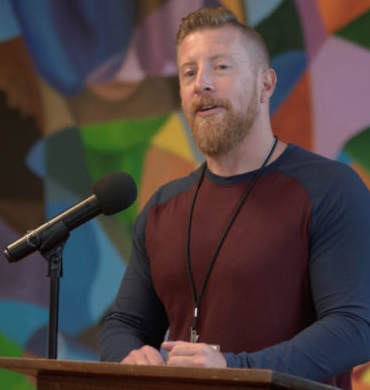Tennesseean Almeer Nance, a juvenile lifer, was featured in this 2021 Al Jazeera documentary.
Almeer Nance was 16 when, with a 20-year-old acquaintance, he walked into a Knoxville, Tennessee, Radio Shack to commit what he thought would be a quick and simple robbery.
Nance did not fire the shot that killed a clerk in that store. But he was convicted of felony murder and, under state law, was sentenced to serve a mandatory minimum of 51 years of a 60-year life sentence before he could be considered for parole. On top of that life sentence, he was sentenced to an additional, consecutive 25 years.
A quarter-century after that 1996 fatal shooting — the then 20-year-old who confessed to the killing has been imprisoned for life — the Tennessee Supreme Court has ruled that mandatory life sentences for youth are cruel and unusual punishment. According to that 3-to-2 vote by the court late last year, those convicted of murder as minors must be allowed a chance at parole after a minimum of 25 years in prison.
The ruling has 43-year-old Nance, who also has applied for gubernatorial clemency, optimistic for the first time in years that he might experience life outside prison. He’s spent his time at the Northwest Correctional Complex earning certification as a heating-ventilation-air conditioning technician and an associate degree. He’s now working toward a bachelor’s degree.
“It’s a crazy situation because you’re doing everything you can to better yourself, to be a better person,” Nance said in a telephone interview from his prison in Tiptonville, a six-hour drive from his hometown. “You’ve done all these things to improve yourself, but you question whether you’ll ever have a chance to use these improvements. I still feel it’s my debt personally to society for the mistakes I made as a child.”
The Tennessee ruling citing the state’s juvenile sentencing laws as the nation’s harshest — no other state has a mandatory minimum of more than 50 years — is the latest in a string of decisions that are reducing the nation’s reliance on long sentences for youth convicted of violent crimes. In almost half the states, juveniles convicted of homicide are eligible for release after 25 years or are sentenced to serve 25 years; and three-quarters of states grant release eligibility for such offenders after 35 years, the Tennessee justices noted.
The U.S. Supreme Court ruled in 2010 that states could not hand down automatic life sentences for juvenile offenders convicted of non-murder crimes. Two years later the court extended that ruling to apply to all convictions for juvenile crimes; a 2016 decision applied that ruling retroactively to more than 2,000 past cases.
Some states ignore court orders to lessen juvenile sentences
Although hundreds of convicted felons have been released since those rulings, the process hasn’t always been smooth. Prosecutors in some states have stymied attempts by long-incarcerated people to be paroled or resentenced, sometimes demanding lengthy, expensive hearings rather than simply agreeing to release them.

Courtesy of Deborah LaBelle
Deborah LaBelle, founder of the Youth Justice Fund.
In Michigan, prosecutors across the state have fought lifers’ release, “declaring each was the rare person for whom rehabilitation wasn’t possible,” said Ann Arbor civil rights attorney Deborah LaBelle, founder of the Youth Justice Fund. Those declarations have been just another slap in the face for people who have spent decades in prison after childhoods full of dysfunction and trauma, said LaBelle, who has worked to free juvenile lifers.
About one-third of people convicted of murder as youth in Michigan, like Almeer Nance, didn’t actually kill anyone, but were somehow involved in the crime, she said: “They’ve been told there’s no hope for them, that they’re to be thrown away, that they’re going to die in a prison because they’re so heinous. To say that someone who never actually killed someone is irreparably corrupt, that’s just wrong.”
About 150 of the 362 Michigan lifers who have been resentenced have been released, LaBelle said, and none has been rearrested within three years of their release. Michigan has the nation’s largest population of juvenile lifers, according to Preston Shipp, senior policy counsel for the Campaign for Fair Sentencing of Youth.

Courtesy of Preston Shipp
Preston Shipp, senior policy counsel for the Campaign for Fair Sentencing of Youth.
Michigan still allows youth to be sentenced to life without parole. Prosecutors must prove “by clear and convincing evidence” that a defendant cannot be rehabilitated before a judge will allow the harshest sentence.
With mandatory life sentences now outlawed, prosecutors in states like Michigan have had to decide whether to push judges to once again impose life without parole on those imprisoned since childhood. In Genesee County, Michigan, prosecutors have failed every time they’ve tried that approach in the past decade, said David Leyton, serving his fifth term as the county’s elected prosecuting attorney.
Leyton said that track record has caused him to seek more lenient sentences for lifers being resentenced. And yet most victims’ families ask him to push for life without parole. It’s difficult to weigh all the factors in a murder case, he said.
“So many young people who commit these crimes had no chance at life to begin with,” Leyton said. “So they turned to the streets and that’s where they got their values from. Still, you have to balance that with the safety of the community.”
Brain development, bad behavior, peer pressure are linked
Multiple studies, over the decades, have revealed what researchers say are dramatic differences between adolescent and adult brains. According to the Harvard-based Center for Law, Brain & Behavior, adolescents are more likely than adults to take risks and to seek approval from peers, behavior that often leads to irresponsible behavior.
“These developmental differences in behavior have direct implications for legal decision-making, including waiving Miranda rights, susceptibility to false confessions, and making ill-advised trial decisions (e.g., plea decisions),” researchers noted in a 2020 paper to help guide attorneys, judges and policymakers.
Many states adopted mandatory life sentences during the tough-on-crime years of the 1990s, said Shipp, a former Tennessee prosecutor. Most have rolled back those policies since the Supreme Court decisions, offering parole within 15 to 30 years.
The more lenient strategy “basically just recognizes that kids are different,” said Shipp, whose departure from prosecution began when he started teaching college classes for prisoners who had been incarcerated as youth. “We don’t want to give up on children. They need to be held accountable in a more compassionate way that recognizes the trauma they’ve likely already experienced and their potential.”
When the Supreme Court outlawed mandatory life sentences for youth in 2012, Shipp said, about 2,800 such people were incarcerated across the country. About 935 have since been released.
By the start of 2020, Montclair State University researchers found, Pennsylvania had resentenced 88% of its juvenile lifers, compared to 52% in Michigan and 15% to 22% in Louisiana. Those three states accounted for two-thirds of the country’s juvenile life sentences at that time.
Planning life out from behind prison bars
Among those paroled in the years following that decision was Antonio Espree-Bey, 51, who was sentenced to life in a Michigan prison after killing a bystander during a drug-related shootout as a teenager in 1987. Espree-Bey said he did not understand the gravity of his crime or his sentence until years after he was locked up.
“As a 16-year-old there was no type of thoughtfulness or emotions or sympathy behind (the killing) because I didn’t understand it,” said Espree-Bey, who has since moved to Arizona, where he plans to graduate with a bachelor’s degree from Arizona State University this year before entering graduate school.
“I didn’t know how to have those feelings at that age,” he said. “I didn’t know how to think for myself. That’s why I was so impressionable.”
Almeer Nance said he went through the same cycle of confusion and despair as his sentence sank in. Although he quickly started working on his high school diploma in prison, he also dealt with depression and drug use for a time.
“Just imagine at that age: You’re not old enough to drive, you’re not old enough to vote, you’re not old enough to smoke, but you’re considered old enough to be thrust into this life of prison,” Nance said. “You’re locked away with some of society’s most incorrigible people.
“It’s like a death of sorts.”
***
Chicago-based journalist Matt Krupnick covers inequality, education and other topics.































